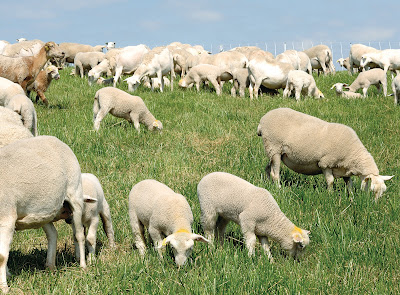The average consumer has had no other option but to eat eggs from battery-caged hens. In recent years, a number of poultry producers have chosen to raise their chickens in a pasture as concerns over the quality of market-produced feeds have posed a threat to their animals. Pasture-raised hens end up being more productive and laying richer and more nutritious eggs compared to their caged counterparts.
Caged hens are usually nutrition-deficient. They have lower levels of Vitamin E and Omega-3 required for their own sustenance. This is often attributed to genetically modified soy that comprise a huge percentage of their feeds.
On the other hand, pasture-raised chickens thrive on nutrients, as they are free to consume all grain, grass, worms, and insects in the inherent ecosystem of the farm. Thus, the eggs end up having 20 percent less cholesterol, 25 percent less saturated fat, twice the amount of Omega-3 fatty acids, thrice the amount of Vitamin E, seven times the amount of beta carotene and four times the amount of Vitamin D. It’s no wonder those who use these kinds of eggs for cooking have noticed richer and redder yolks.
The other advantage to this is that the eggs weren’t given antibiotics and other supplements that could adversely affect the human body upon consumption. In the recent years, consumption of genetically modified foods led to an increase in allergic triggers. Now that many farms are advocating silvopastoralism, people now have an access to all-natural and all-organic poultry products.
Geoffrey Morell knows the importance of naturally grown livestock. They grow up healthier when raised the natural way, which makes them a better source of nutrients for the community. People can purchase his organic meat and dairy products in his farm, the P.A. Bowen Farmstead, and other select farmer’s markets. Visit the farm’s website for more information on the products.
Caged hens are usually nutrition-deficient. They have lower levels of Vitamin E and Omega-3 required for their own sustenance. This is often attributed to genetically modified soy that comprise a huge percentage of their feeds.
Image source: Modernstead.com
On the other hand, pasture-raised chickens thrive on nutrients, as they are free to consume all grain, grass, worms, and insects in the inherent ecosystem of the farm. Thus, the eggs end up having 20 percent less cholesterol, 25 percent less saturated fat, twice the amount of Omega-3 fatty acids, thrice the amount of Vitamin E, seven times the amount of beta carotene and four times the amount of Vitamin D. It’s no wonder those who use these kinds of eggs for cooking have noticed richer and redder yolks.
Image source: Originegg.co
The other advantage to this is that the eggs weren’t given antibiotics and other supplements that could adversely affect the human body upon consumption. In the recent years, consumption of genetically modified foods led to an increase in allergic triggers. Now that many farms are advocating silvopastoralism, people now have an access to all-natural and all-organic poultry products.
Geoffrey Morell knows the importance of naturally grown livestock. They grow up healthier when raised the natural way, which makes them a better source of nutrients for the community. People can purchase his organic meat and dairy products in his farm, the P.A. Bowen Farmstead, and other select farmer’s markets. Visit the farm’s website for more information on the products.



